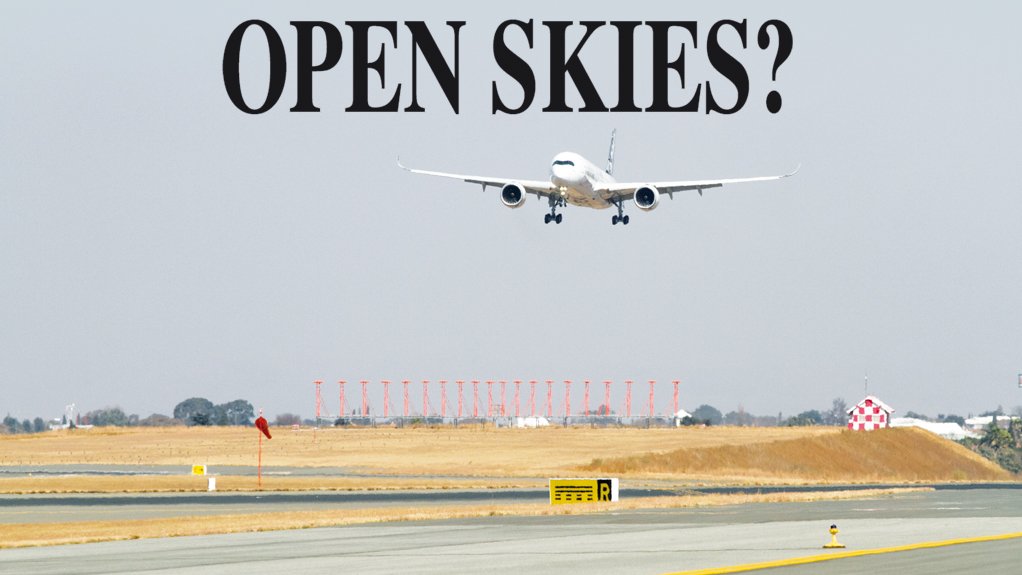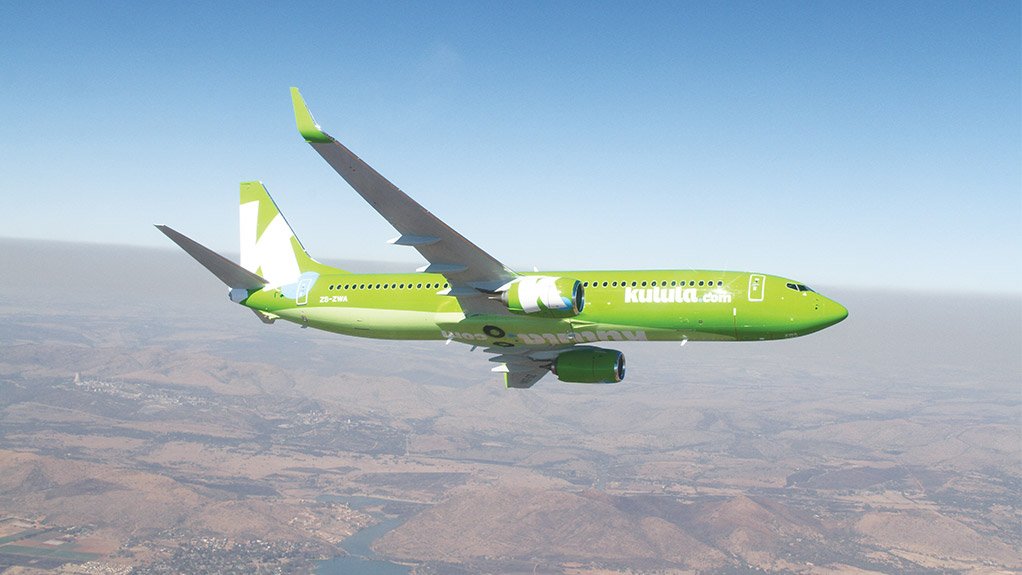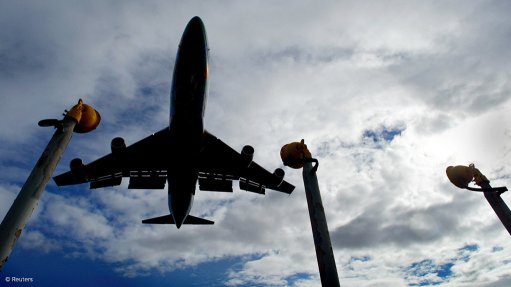Africa’s air traffic liberalisation journey continues, after 30 difficult years





STANDING TO BENEFIT A Boeing 737-800 of low-cost carrier Kulula
Photo by Comair
RAPHAEL KUUCHI The Single African Air Transport Market is a bold initiative
Photo by IATA
ERIK VENTER Open Skies is likely to stimulate competition and demand
Photo by Comair
In November 1988, the Ministers responsible for civil aviation in 40 African countries agreed a declaration on a new African air transport policy. This was immediately designated the Yamoussoukro Declaration, after the city in which it was adopted (the capital of Côte d’Ivoire).
Among other things, the declaration stated. “[The Ministers], convinced that air transport is an important tool for the promotion of social good and economic development in Africa and in the world, . . . Considering the need for African countries to exchange traffic rights in a liberal manner in order to develop air services among themselves, . . . Recognising the fragility of the present air transport industry in Africa and the smallness of its market, … Strongly resolved to considerably restructure African air transport in order to make it contribute more significantly to the national development of African States and to the continent’s social and economic integration, Agree to commit ourselves, individually and collectively, to promote a climate of cooperation and solidarity which is necessary for the safeguarding and development of international air transport activities in Africa . . .” This would be done in accordance with guidelines contained in the declaration, which covered matters such as the integration of airlines, costs and tariffs, improved management, the financing of air transport operations, computerised reservation systems, and aircraft noise.
The second of the guidelines was concerned with air traffic rights. “During the implementation of the programme for the integration of our airlines, the need to exchange traffic rights will be gradually eliminated,” it stated. “During the period of transition, it is necessary to show more flexibility in the granting of the fifth freedom to African airlines.” (The International Civil Aviation Organisation defines the fifth freedom of air transport as “the right or privilege, in respect of scheduled international air services, granted by one State to another State to put down and to take on, in the territory of the first State, traffic coming from or destined to a third State”.)
The Yamoussoukro Declaration would have started opening the African air transport market to African airlines on a continental basis in place of the existing networks of bilateral arrangements between pairs of African countries. It was never implemented.
In November 1999, Africa tried again, with the Yamoussoukro Decision, to achieve the liberalisation of air transport markets in Africa. This document was then endorsed by the African Union’s (AU’s) Assembly of Heads of State and Government (meeting in Lomé, Togo) in July 2000. Again, it failed to bear significant fruit. Meanwhile, during the 1990s, other regions had liberalised their air traffic markets, resulting in significant air traffic growth and stimulating national and regional economies.
In January 2018, a third attempt was launched, with the endorsement of the AU’s Single African Air Transport Market (SAATM) initiative by 23 African countries. Perhaps the third time will be lucky, although the SAATM has not yet been fully implemented.
“This has been a 30-year journey for Africa,” observes Airlines Association of Southern Africa CEO Chris Zweigenthal. “This liberalisation has proved difficult to implement on a continental scale due to varying States’ positions on their readiness for implementation, the necessity for competition regulations, dispute resolution mechanisms, implementation provisions and incorporation into domestic legislation. In addition, it is important that such liberalisation must be undertaken on a consistent basis with the same rules for all States, ensuring reciprocity and fair competition between the African airlines.”
This delay has not all been wasted time, however. “Liberalisation has continued in certain jurisdictions on a regional basis,” he points out.
Bold Initiative
The International Air Transport Association (Iata) has been a consistently strong supporter of liberalised air traffic markets around the world. Africa is no exception – of Iata’s some 280 member airlines, 38 are African.
“The AU’s recent launch of the SAATM initiative, which will open up Africa’s skies and improve intra-African air connectivity, is a very positive step towards transforming the fortunes of our industry and the lives of Africa’s citizens,” enthuses Iata VP: Africa Raphael Kuuchi. He sees the SAATM as a complement to the recently launched programme to create the African Continental Free Trade Area (AFTA), which could create a market of 1.7-billion people, with a total business and personal spending capacity of more than $6.7-trillion by 2030.
“The SAATM is a bold initiative aimed at stimulating demand, improving the competitiveness of Africa’s airlines and making air travel more accessible,” he affirms. “In turn, this ought to enable higher volumes of trade, expand tourism and grow commerce among African nations and with the rest of the world. This socioeconomic imperative ought to be a compelling incentive for African governments to adopt the principles of, and participate in, the SAATM.”
The African aviation industry is already a significant factor in the continent’s economy. It is responsible for $80-billion in gross domestic product (GDP) across Africa and supports 6.9-million jobs. African air travel is currently forecast to grow at almost 6% a year over the next 20 years. But liberalising air traffic across the continent would significantly increase these figures, he notes.
A 2014 report by InterVISTAS on behalf of Iata forecast that unrestricted air transport between only 12 African countries would increase air traffic by some five-million passengers a year, create 155 000 new direct and indirect jobs and increase their combined annual GDP by $1.3-billion. Nine of these countries are in sub-Saharan Africa. They are Angola, Ethiopia, Ghana, Kenya, Namibia, Nigeria, Senegal, South Africa and Uganda.
The adoption of such a liberalised air transport regime would, for Angola, increase its GDP by $137-million and create 15 300 jobs. For Ethiopia, the respective figures would be $59.8-million and 14 800. Ghana would gain $46.8-million in GDP and 9 500 more jobs, while Kenya’s GDP would rise by $76.9-million and the country would see 15 900 new jobs created. Namibia would benefit to the tune of $94.2-million more in GDP and 10 600 more jobs. Nigeria would see a $128.2-million increase in GDP and the creation of 17 400 jobs, while the equivalent numbers for Senegal would be $40.5-million and 8 000. South Africa’s GDP would increase by $283.9-million and jobs by 14 500. Uganda would gain $77.6-million in GDP and 18 600 jobs.
“The study clearly highlights the crucial role air transport plays in driving African economic and social development through enhanced connectivity,” stresses Kuuchi. “For countries which depend heavily on mining and resources, greater air connectivity represents an opportunity to diversify their economies, most notably through the cultivation of a strong tourism sector, which is a proven job-creation industry.”
Huge Potential
“Africa accounts for only around 3% of global passenger traffic, and, if it wishes to increase its share of this traffic, its [air travel] growth rate needs to increase further to double-digit growth off its current low base,” explains Zweigenthal. “There is huge potential for intra-African growth to provide an integrated network of new services and increased frequencies between African destinations. Growth of domestic and regional flights could provide a springboard for additional international flights [by African airlines]. African airlines currently carry only 18% of international travellers to and from Africa, as opposed to the 82% carried by international airlines. There is huge potential for the growth of air transport in Africa.”
He notes that, while some African airlines might struggle in a liberalised air traffic environment, some have already been struggling in a nonliberalised environment. Success in meeting liberalisation can depend on how an airline prepares itself, in its positioning and structure, to meet the challenges that will arise. Responses could include entering alliances and/or code-sharing agreements and/or partnerships with other African airlines. “However, liberalisation of the African skies would benefit African aviation as a whole.”
South Africa’s biggest private-sector airline group is Comair, operator of the British Airways in Southern Africa and Kulula.com low-cost carrier brands. Its CEO, Erik Venter, sees implementing air traffic liberalisation (often referred to as ‘Open Skies’) in Africa as being widely beneficial. “Open Skies is likely to stimulate competition and demand on air routes within Africa and between the continent and the world, and could trigger significant growth for airlines and related sectors such as cargo, tourism, business travel and meeting friends and family,” he cites. “Comair’s two airline brands wouldn’t necessarily be directly affected by the liberalisation, but would stand to benefit from increased demand for air travel on its routes in Southern Africa. South Africa’s aviation sector is hampered by sluggish economic growth and any improvement in those conditions would benefit the sector. But Open Skies may well increase competition: airlines like Comair, which are already efficient and competitive, would probably cope well. Those airlines which are inefficient or are sustained artificially would probably fare less well.”
The Commercial Aviation Association of Southern Africa (CAASA) is the representative body for nonscheduled commercial aviation companies and operators. It embraces charter operators, commercial business aviation, air taxi operators, on-demand flight operators and many other sectors (ranging from flying schools to aerial photography to crop-spraying to aerial surveying and more). “The CAASA does not have an institutional position on Open Skies in Africa,” notes CAASA CEO Leon Dillman. “But, from the non-scheduled side, if Open Skies does deliver more tourists to Southern Africa, surely the demand for internal and regional charter flights will also increase and, by implication, positively stimulate the rest of the commercial general aviation value chain (consumables, maintenance, and so on). Even if other international or African operators ‘open shop’ in South Africa to satisfy the increase in demand, it is foreseen that it would . . . be more beneficial to the general commercial environment than harmful.”
Caveat
“But there is a caveat,” cautions Kuuchi. “For the AFTA and the SAATM to fulfil their full potential, they must be fully implemented. This will require greater collaboration between governments, who must follow through with their commitments so their economies and aviation can fly high. Fulfilling this potential will not happen by chance; strong partnerships and cooperation are the key. For too long, a lack of cooperation has blighted our great continent’s development.”
“Open Skies seems to be well overdue and there seems to finally be the political will to achieve it, as well as an understanding of its benefits,” says Venter. “However, there are still many fundamentals that have not been resolved, such as centralised regulation of anti-competitive conduct, agreement on the conditions for airlines to be registered in African countries as African airlines, and common standards for the management of African airspace. The absence of these building blocks will likely cause many countries to abstain from Open Skies.”
Article Enquiry
Email Article
Save Article
Feedback
To advertise email advertising@creamermedia.co.za or click here
Comments
Press Office
Announcements
What's On
Subscribe to improve your user experience...
Option 1 (equivalent of R125 a month):
Receive a weekly copy of Creamer Media's Engineering News & Mining Weekly magazine
(print copy for those in South Africa and e-magazine for those outside of South Africa)
Receive daily email newsletters
Access to full search results
Access archive of magazine back copies
Access to Projects in Progress
Access to ONE Research Report of your choice in PDF format
Option 2 (equivalent of R375 a month):
All benefits from Option 1
PLUS
Access to Creamer Media's Research Channel Africa for ALL Research Reports, in PDF format, on various industrial and mining sectors
including Electricity; Water; Energy Transition; Hydrogen; Roads, Rail and Ports; Coal; Gold; Platinum; Battery Metals; etc.
Already a subscriber?
Forgotten your password?
Receive weekly copy of Creamer Media's Engineering News & Mining Weekly magazine (print copy for those in South Africa and e-magazine for those outside of South Africa)
➕
Recieve daily email newsletters
➕
Access to full search results
➕
Access archive of magazine back copies
➕
Access to Projects in Progress
➕
Access to ONE Research Report of your choice in PDF format
RESEARCH CHANNEL AFRICA
R4500 (equivalent of R375 a month)
SUBSCRIBEAll benefits from Option 1
➕
Access to Creamer Media's Research Channel Africa for ALL Research Reports on various industrial and mining sectors, in PDF format, including on:
Electricity
➕
Water
➕
Energy Transition
➕
Hydrogen
➕
Roads, Rail and Ports
➕
Coal
➕
Gold
➕
Platinum
➕
Battery Metals
➕
etc.
Receive all benefits from Option 1 or Option 2 delivered to numerous people at your company
➕
Multiple User names and Passwords for simultaneous log-ins
➕
Intranet integration access to all in your organisation






















